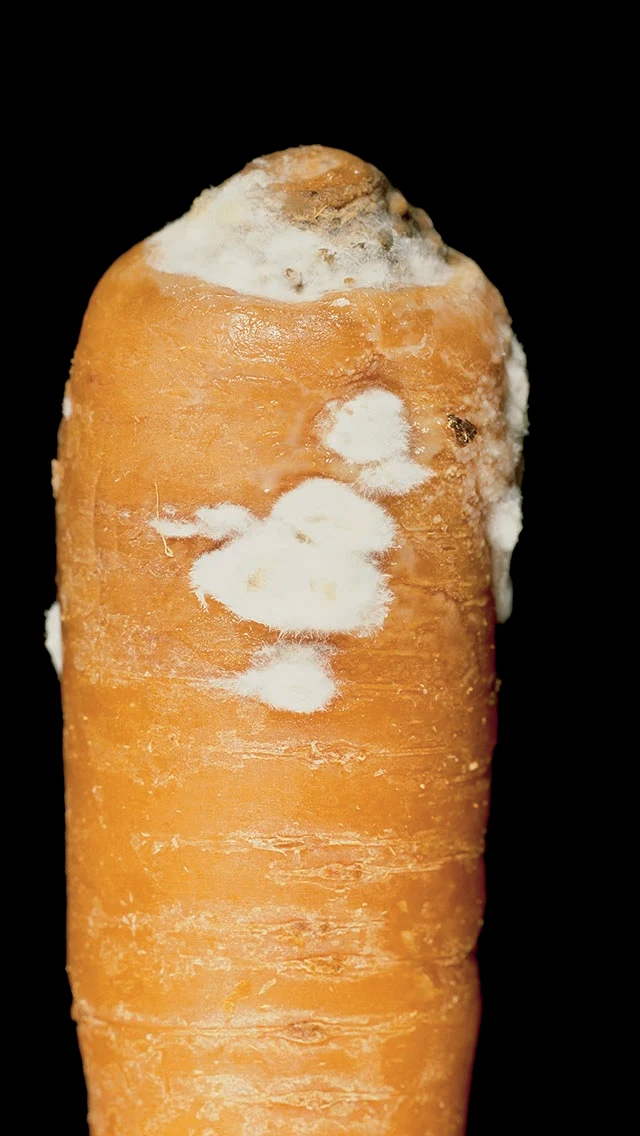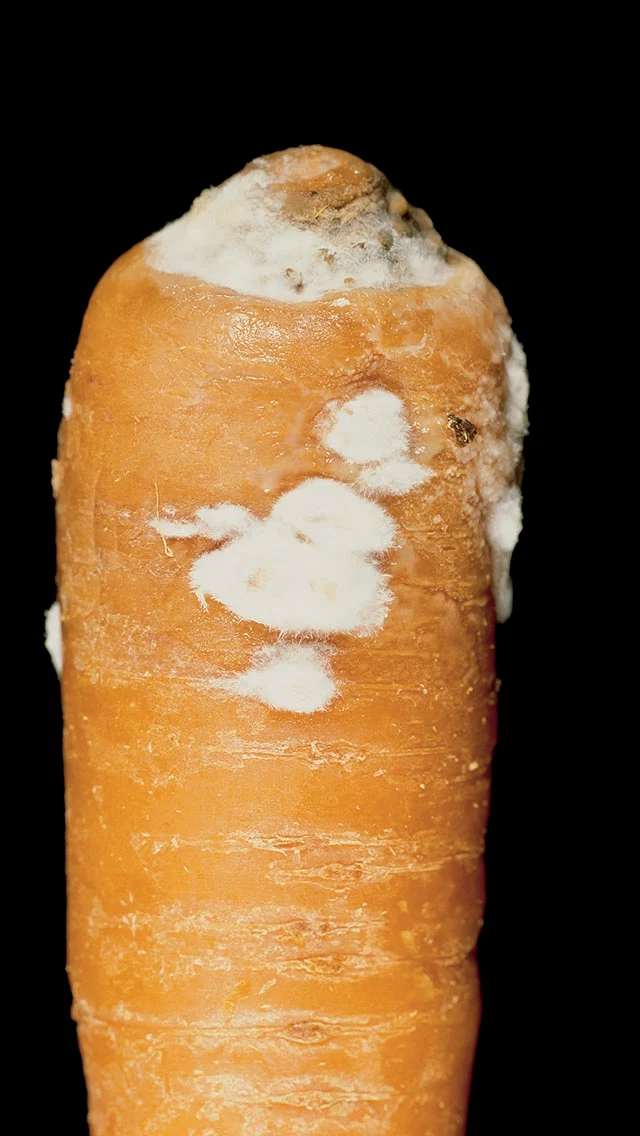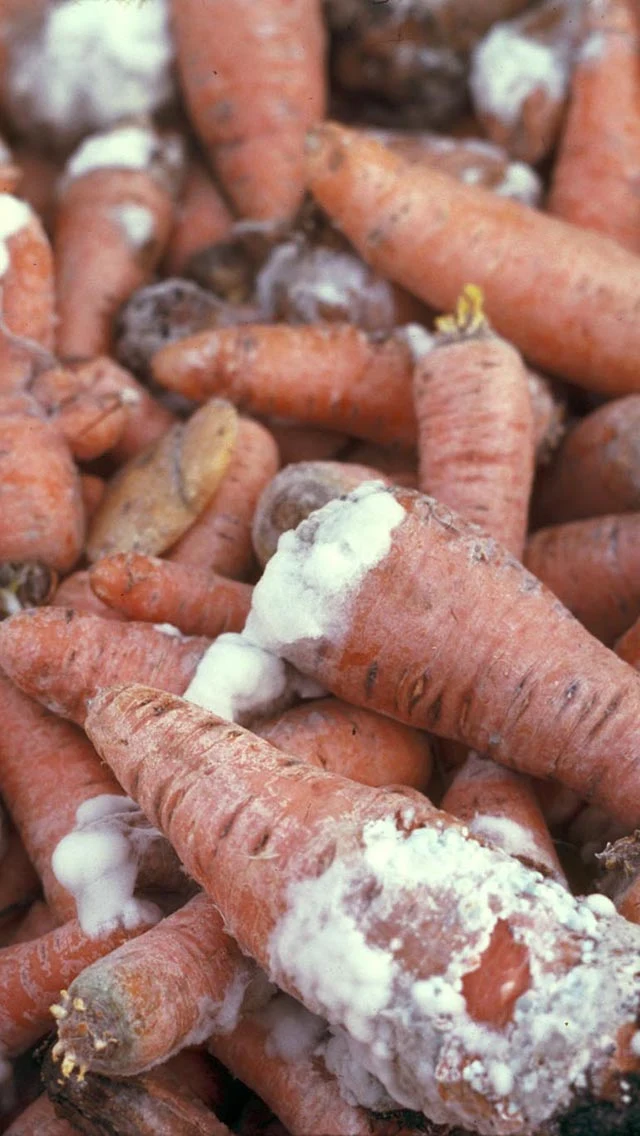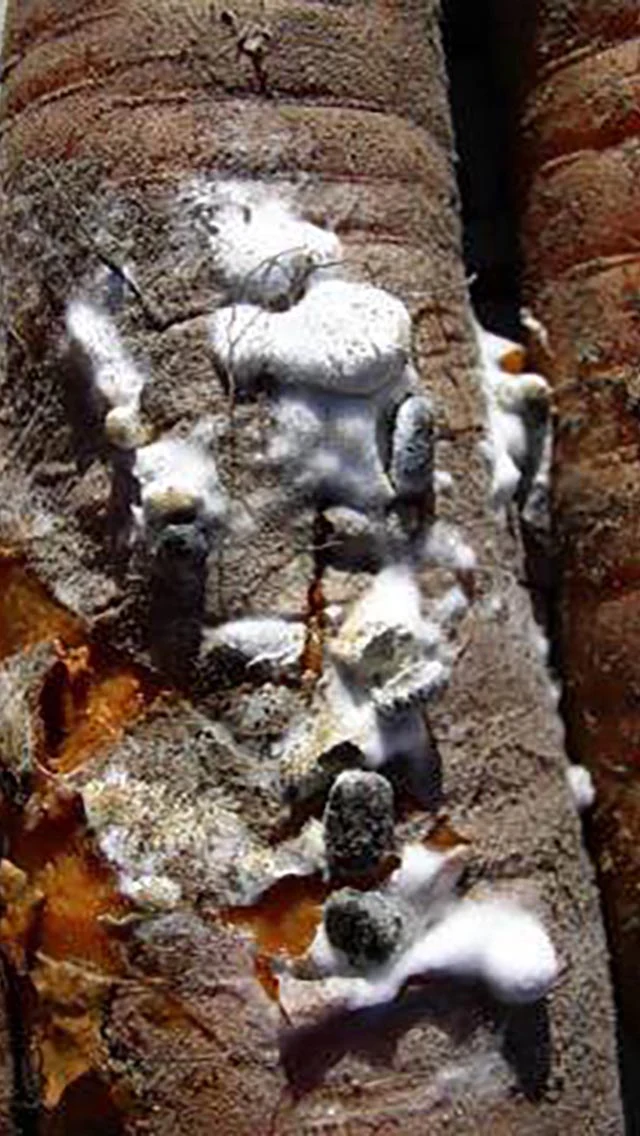
Sclerotinia - Carrots
Sclerotinia sclerotiorum
Pathogen
Fungus
Hosts
Carrots, oilseed rape, peas, potatoes, lettuce, beans and other vegetable crops
Symptoms
The characteristic Sclerotinia white mycelium containing large black sclerotia resting bodies can be found on the foliage, stems and the roots. In severe infestations the foliage collapses into a slimy mass.
Development
Sclerotinia overwinters in sclerotia resting bodies in soil and crop debris. These germinate in favourable conditions to form apothecia (trumpet-like structures) which release wind-borne ascospores. In wet conditions these invade crop debris or diseased, senescing or decaying plant tissue. The roots are infected via the leaf petioles and the crown.
A few weeks after disease establishment sclerotia, 5 – 15 mm in diameter, can easily be found within the white `cotton wool` mycelium.
Infection occurs from June to October.
Favourable factors
Warm (above 10 degree C) and moist soils.
Importance
A very important economic disease of carrots which can cause huge losses in stores especially where Sclerotinia and secondary bacterial pathogens are active. Losses as much as 50 % of stored produce have been recorded.
Other host plants include oilseed rape, lettuce, beans, brassicas, peas, potatoes, other vegetable crops as well as a range of weeds including mayweed, deadnettle, cleavers, chickweed, fat-hen and field pansy.
Control
Spore monitoring systems have been developed to help growers with disease risk
Removing excessive senescing foliage using the newly developed `canopy cutting technique`
which removes foliage which is falling over.
Raised beds, allowing greater air circulation
Long rotation with non-host crops (sclerotia can survive for up to 5 years in the soil)
Effective weed control especially of alternate host plants
Start protective fungicide programme when crop risk has been advised

Sclerotinia

Sclerotinia leaf symptoms

Rejected sample due to Sclerotinia

Severe disease pressure

Sclerotinia on the stem


